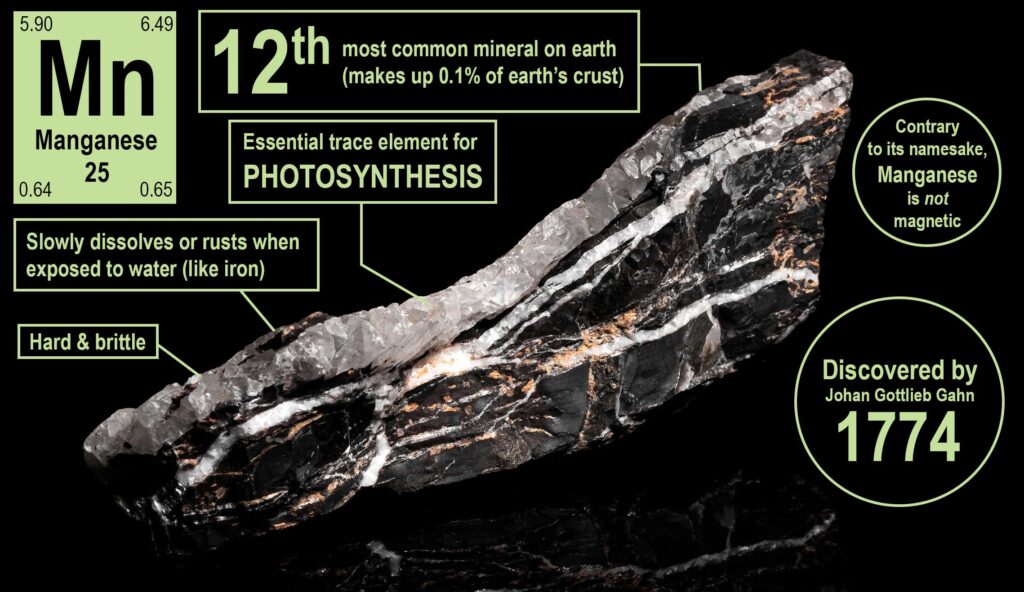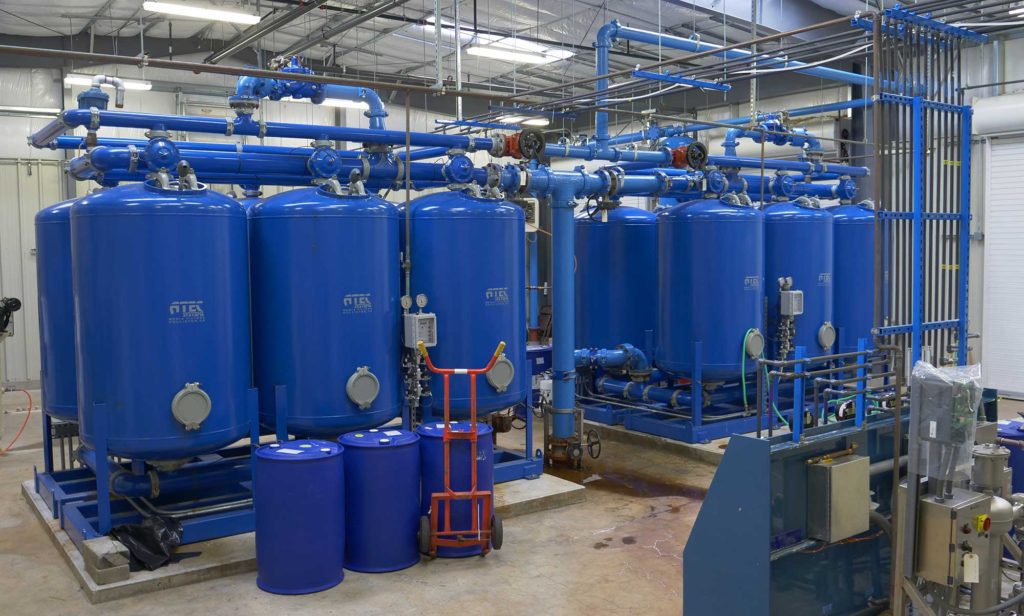Digging-Down on Manganese
Manganese is one of the most common minerals found on earth (#12 on the list, actually). For much of Jefferson County, manganese is a part of our water cycle with a pretty unique history that’s worth digging into (geologic pun!).
Where does manganese come from?
Manganese is a mineral often associated with iron and is essential for some biological processes, including photosynthesis. It’s commonly found in sedimentary rock layers such as sands and gravels where the rocks have encountered hot water deep underground—such as some hot springs within the beautiful Olympic or Cascade Mountain ranges.
It also travels. Much of the manganese in our region (and the exposed rocks in your yard or on the beach for that matter) were transplanted here by massive glaciers that paraded down from Canada and retreated. Left behind was a mineral-rich buffet and unique landscape in our little corner of the world.
Below our feet throughout much of eastern Jefferson County is a slow-moving waterway driven by surface rains captured in our regional aquifers. This groundwater flows toward the Salish Sea, and manganese moves freely through with relative ease.
How does Manganese enter the water table?
Manganese is found in local groundwater, but generally not in most surface water. Locally, it’s primarily within our sand and gravel aquifers.

A good example is the Chimacum valley. For millennia, the valley contained extensive peat bogs. Peat bogs are bodies of water that fill in overtime with decaying material which absorbs oxygen in the water and lowers the pH (a lower pH means it is more acidic). Natural acidity helps separate manganese from the sands and gravels of the aquifer in and around the bog.
Water system managers can tell the geologic structure underfoot thanks to well logs of productive wells, such as the Sparling wellfield near Chimacum. In the springtime, when water level rises, raw water discharge pumped from 100+ feet underground can be brown due to both boggy organics and iron and manganese. It’s amazing we can get that water out the door and with undetectable levels of manganese present!
Filtering manganese

A lot of water systems in eastern Jefferson County have elevated levels of manganese. Treatment is required to remove it. Manganese is not regulated as a primary contaminant in the United States, though it is listed as a ‘unregulated secondary contaminant’ where aesthetics such as staining and metallic taste are the primary concerns.
Staining and icky taste occurs when manganese oxidizes after contacting air. Excessive manganese oxide can give water a metallic taste, stain toilets and showers with a gray-black film, as well as stain laundry.
Water treatment takes advantage of the oxidizing nature of manganese. To scrub manganese, water system operators introduce a reusable media of charged beads. Each bead is roughly the thickness of a human hair and charged with manganese dioxide, which causes the metal ions to separate out of water. The beads, along with the now-freed manganese, are backwashed and removed from the system. Chlorination is performed to help the process. The result is drinking water with no detectable levels of manganese.
Sampling by the PUD for inorganic metals is conducted on a 9-year cycle. Water system managers do test filtration efficiency of each system to check if changes or replenishment of filtration media is needed.
What else can you do with manganese?
Manganese is utilized for a wide variety of products and services from steel manufacturing, battery manufacturing, fertilizers, nutritional supplements, even fireworks. It is also biologically essential for certain metabolic processes and functions like photosynthesis.